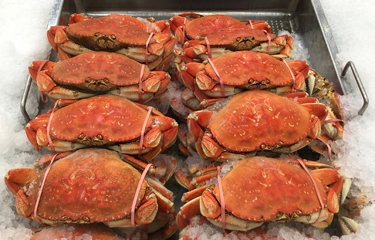Nine seafood items have received special exclusions from tariffs placed by the United States on goods imported from China.
The items – which must be individually frozen or frozen in blocks to qualify, depending on the harmonized tariff system (HTS) classification code – include Alaskan sole, Alaskan plaice, flounder, sole, slipper lobster, king crab, snow crab, Dungeness crab, and meat from crabs other than king, snow, Dungeness, and swimming crab.
The exemptions were granted on 31 January and are retroactive to 24 September, 2018, the date the tariffs were imposed. That means companies can apply for rebates on the tariffs they already paid on the items they imported.
Many of the products are items caught in the United States and sent to China for processing. Each of the products was included in a USD 200 billion (EUR 170.7 billion) round of tariffs imposed by U.S. President Donald Trump on Chinese goods, which already included several exemptions for U.S. seafood products, including frozen cod and pollock. Originally, the goods were subject to 10 percent tariffs but the rate increased to 25 percent in May 2019, according to the U.S. Trade Representative (USTR).
The products received belated exclusion from the 5,757 full and partial subheadings subject to the tariffs after unidentified parties made special requests to have them removed. To do so, they must have applied by 24 June 2019, by including a brief description of the production’s distinguishing physical characteristics and an explanation of why the product is only available from China, whether additional duties would cause severe economic harm to the requestor or other U.S. interests, and why the product was strategically important to U.S. interests. The USTR granted 208 requests for exemptions in its 31 January, 2020, announcement.
Most seafood products imported by the U.S. from China remains subject to tariff rates between 10 percent and 25 percent, though the Phase One trade deal signed on 15 January includes language that could lead to additional exemptions.
Photo courtesy of Jillian Cain Photography/Shutterstock







